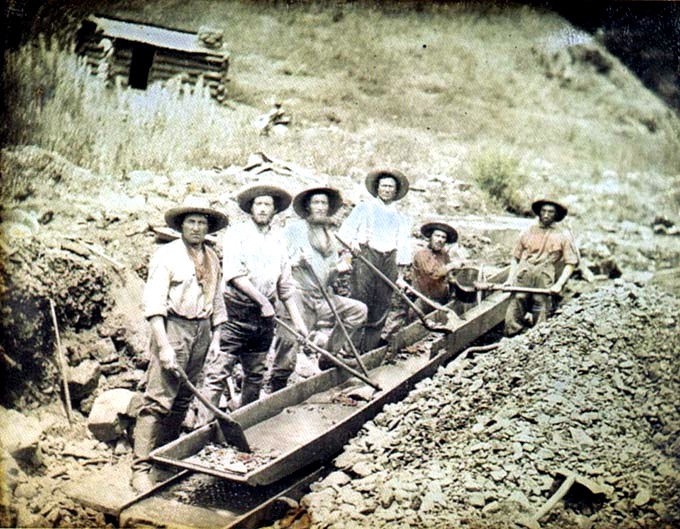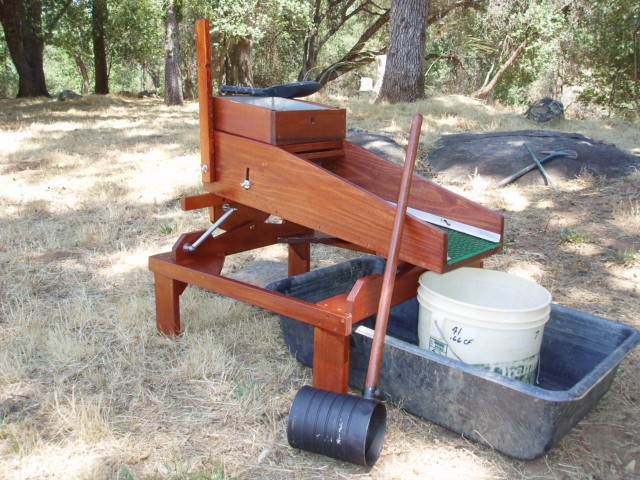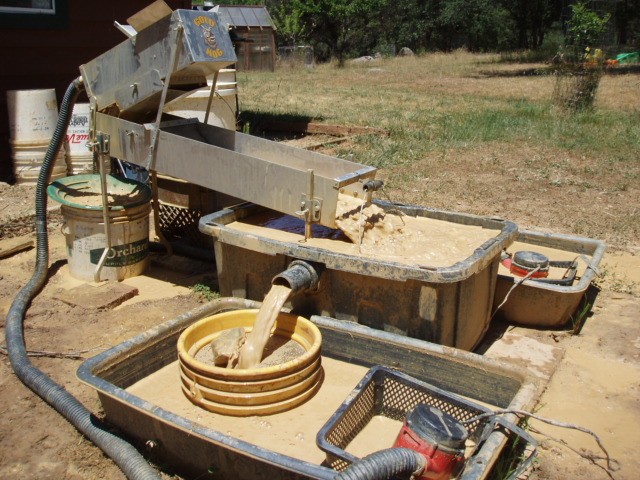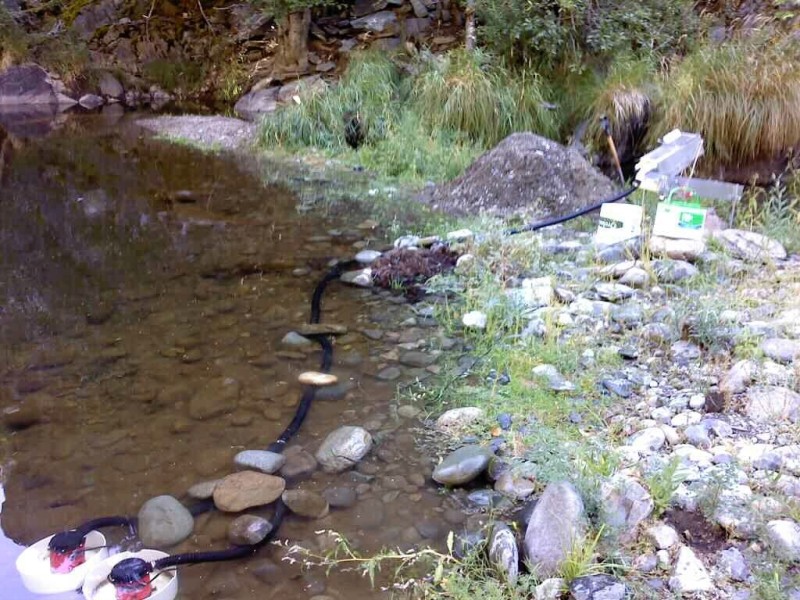
HardPack
-
Posts
607 -
Joined
-
Last visited
Content Type
Forums
Detector Prospector Home
Detector Database
Downloads
Posts posted by HardPack
-
-
2 hours ago, NCtoad said:
However, my back and hamstrings were so sore that night that I didn’t think I’d get out the next day. When I got up Saturday I was still sore but by late afternoon I had recovered enough to hit that area again for two hours.
Appears to have been worth the pain & effort. Take my Apple Cider Vinegar with honey.
-
1 hour ago, Mark Gillespie said:
Neither the Manticore or Equinox would give a good enough audio to prompt us to dig. The ID on both detectors had been pulled down well over half of what a dime should indicate.
Did you happen to try either the Equinox or Manticore in single frequency say 10 or 15 kHz?
-
18 minutes ago, George Kinsey said:
The one Reale left me speechless.
Nice!
-
Just found this reference to “graphite” in one of Jim Straight’s book on prospecting & detecting, “…some highly metamorphosed schist containing graphite…can act as electrically conductive material.” Graphite is carbon. A google check confirmed the electrical conductivity of graphite. After passing some graphite removed from a drafting pencil over a Legend coil sure enough TID 11 (LG24, Park,M1). Iron Pyrite can also occur in schist.
-
1 hour ago, phrunt said:
My drunkenness went away after having a long cold shower and about 2 litres of water, I think I was dehydrated or had sun stroke and
Glad to hear this.
-
19 hours ago, hangtownrods said:
penny at 9 in but a us quarter at just 2in
If the US quarter is clad the copper penny may have a higher conductivity that hits deeper than the surface area of the clad quarter. I haven’t experienced this issue with either of the EQX 900 stock coils. 8 inches is close to the detection limit here, your ground may have difference mineralization. If the quarter is silver then there’s a problem.
-
4 hours ago, phrunt said:
I'm not sure what the green rocks
The green color may be from chlorite in the schist. The rock type is found adjacent to the lode deposits here with some pyrites; also serpentine, basalts plus magnetite (Fe3O4) & hematite the area.
It would be interesting to see the E1500 in “normal mode” on mineralized ground cancel out hot rocks. Nice machine, they really are covering the bases.
Found this reference “…some highly metamorphosed schist containing graphite (carbon), some pyrite, some chalcopyrite…”. Graphite is conductive (11 TID on the Legend).
-
13 hours ago, phrunt said:
, I have no idea if its windy, or if there are any other disturbances
The threshold & target tones sounds solid, no problem hearing either over wind gusts or the minor EMI. Thanks for posting
-
3 hours ago, flakmagnet said:
What does this post even mean?
Some of us may be headed down the road of a future purchase and may be in need of group support and encouragement.
Allow me to expand. From the videos posted by other forum members we have gained some valuable information other than just the price point. The Algoforce E1500 is collapsible, ergonomic, light weight, menu driven, wide coil selection,coil caliberating, battery options, handles EMI, frequency scan, four detection modes, cancels out hot rocks, consistent conductivity ID on 22 caliber brass, detects shallow small gold, the control unit is not waterproof, allows for a waterproof coil selection. Other forum members may be interested in performance on a salt water beach with fine jewelry, larger gold at depth or coins/relics at depth. Some members may be reaching the tipping point in regards of a future purchase and may be looking to justify the purchase of another metal detector. Justifying both to themselves and an uninvested third party. Logic may not come into play. Hopes this put us back on the E1500 track.
-
1 hour ago, Steve Herschbach said:
unless of course they are the sorts that just have to have another new toy to play with. There are a few of us like that.

This statement could be the start of a totally different topic:
Why do you find comfort in the above statement by Steve H.?
A) You find comfort with others of your kind.
B) A feeling of belonging.
C) Just basic pack Instinct.
D) Not grounds for a divorce. +
E) All of the above.*
* This comment is not meant to distract from a very important topic regarding the Algoforce E1500 but merely to lay the ground work for future justification(s). No self-incriminating replies are required.
+ This may apply only in the State of Virginia as cited in case law (G. Kinsey vs The Mrs).
-
“Go West Young Man, Go West!” Should have been “Go West Young Man, Go West with your Pocket Change!”
Apparently none of the eldest sons headed out to the West but stayed on to inherit the farm. Great finds, I’m jealous. -
8 hours ago, phrunt said:
bye bye Green hot rock
An impressive machine. Do you think changing the cable wrap on the shaft with two Velcro straps with the cable slack looped above the shaft would help with detecting the cable? You may want to soak your hand in a salt solution…like at the beach. Thanks for the videos, take care of that hand.
-
1 hour ago, Ndplumr said:
Best $6 I ever spent 😁
Have you had a change to explore up around the Jarbidge drainage. Comstock Gold Prospectors Club in Reno had a few claims out your way. They had a claim on the SE side of Star Peak south of Imlay that had a small stream with some placers. Another claim on the loop from Lovelock west towards Pyramid Lake with dry-washer piles.
-
On 2/4/2024 at 5:38 PM, MSC said:
I've made kind of a long tom by putting two sluice boxes end to end
D’arcy Cooper used to fabricate the Boiler Box Dirt Hogg highbanker with a low angle hopper box. Similar to the Long Tom pay dirt with a high clay content is washed prior to dropping through the grizzly bars into the sluice box. The hopper is 36 inches long, the sluice box 48 inches long and tapers from 10 inches out to 12 inches.
I have lots of clay to deal with plus the current California restrictions on highbanker stream pump out-take and sediment discharge, I’d be interested in a light weight packable version of the Dirt Hogg setup to recirculate with 3/4” or 1“ spray bars, a 12vdc pump(s) and a LiFePO4 battery. And perhaps an optional folding portable 100 watt solar panel with a built in charge controller.
-
On 2/5/2024 at 8:28 AM, Goldseeker5000 said:
Yes thats the one.
Did everyone get that?😃
“The Nugget Shooter’s Field Guide”
-
18 hours ago, Ndplumr said:
with a new PI machine, before the AlgoForce reaches the US market.
Nokta now has a real target.
-
3 hours ago, Valens Legacy said:
I did not get to see just how the gold went from the top to the bottom
The nearest miner in the photo has his square nose shovel turned over, the punch plate is located on this nearest end of the upper trough. The miner is prepared to rake the smaller material back & forward over the end punch plate. Any material too large to drop through the holes in the punch plate is classified as a throw-out. If you look closely you can see the water drops hitting the surface of the lower bottom riffle box. The miners could have dug a water ditch above their diggings, the upper gated wooden flume box is carrying the water as needed to the Long Tom’s upper trough. Their diggings are on the left of the Long Tom with the throw-out piles on the right. Normally the miners would start on the lower portion their placer claim then working the diggings to the higher end. Miners on adjacent claims would often combine their efforts to dig a water ditch parallel to all their claims on the higher ground above the claims. Each claim owner would then cut a weir to draft water from the ditch. The weir and Long Tom location would move up the claim as they worked their diggings. This is the situation I see on the claim I am detecting, the miners were working short sections of elevated cemented bench gravels down to the old bedrock bench that were once the bottom of a stream channel. In this area the water supply was reduced or even dried up during the summer months.
Further down stream on a different claim down in the flats the miners switched to a riffled sluice run using the same type of ditch/weir system. The riffled sluice run would travel the width of one side of the claim on either side of the stream. The larger rocks were throw-out to one side and the smaller material not trapped in the riffles was pushed out the end of the sluice run into the stream. In this “flats” case the riffled sluice runs were a couple of hundred feet long.As you can imagine both system were not that efficient at capturing all the gold. You can see in the photo how muddying the water, with the Long Tom any material larger than the diameter of the punch plate holes would be classified as a throw-out. Quartz specimen could find itself a throw-out in both sluicing systems. Unfortunately with the riffled sluice run some gold was deposited back in the stream as opposed to a detectable throw-out pile.
-
On 2/2/2024 at 9:06 AM, Goldseeker5000 said:
My book has a chapter on mass wasting and my next book will also be heavily involved with mass wasting
That would be “The Nugget Shooter’s Field Guide” ?
-
Another view of the Long Tom in operation.

-
2 hours ago, Tom_in_CA said:
So when they were lost here, they could already be 100 to 200 + yrs. old.
That helps explains the time difference. The cash coins were detected on a 1850's placer claim with very little modern trash.
-
DIY Rocker Box

DIY High Banker Recirculating setup

-
On 1/28/2024 at 8:41 AM, John-Edmonton said:
I carry the battery in my backpack and highbanker in a plastic sled. Very portable
Here's an old photo of a Gold Hog mini high banker before the Li Fe PO4 battery. Rigged a shelf on an old backpack frame to haul a 65 pound marine battery down into the river canyon. This photo is prior to California 2016 restrictions on placing a high banker pump in a stream then discharging the sediments within 100 yards. The California regs are still unclear. Both turned out to be a great incentive to purchase a metal detector.
-
10 hours ago, Valens Legacy said:
bottom holes that captured the gold was about 1 1/4 inch in diameter and close to 3/8 in deep
Tempting DIY build. I read the miners could direct stream flow into the upper trough as needed or bucket the water. Cutting a depressed groove in the lower sluice makes sense considering the low water volume. So the shallow 1 1/4” diameter holes were bored into bottom of the upper trough?
-
Has anyone actually seen or even used a “Long Tom Sluice”? I have access to an old claim with an abundance of tailing piles that I suspected were left from the use of a Long Tom (as opposed to a sluice run). If correct there may of been gold discharged and left behind in the piles. Here’s my guess on operation:
It appears the Long Tom was utilized where water supplies were limited. It looks like the pay dirt is deposited in an upper trough to be mixed with water to break up the material then raked across a metal punch plate. The material with a diameter smaller than the punch plate holes dropped into a short (riffled?) sluice box with the larger diameter material tossed aside or pushed off the end of the upper trough. I have not found any reference to the diameter of punch plate holes.
http://mygoldrushtales.com/wp-content/uploads/2011/04/Miners-in-the-Sierras.jpg


900 Update
in Minelab Equinox Forum
Posted
I had EMI issues with the Coiltek 10x5, could be the coil is not specifically calibered to the EQX 900. Both the stock EQX coils were stable on the same site. Now I actually prefer the 11 inch coil and multi tones. I focus more on the tones than TID with multiple passes. I agree the detector is jumping and not a real confidence builder. Iron trash can affect (reduces or pulls down) target TID & tones. In Multi frequency detection depth can be reduced with small iron trash buried across the site. And perhaps the same for high soil mineralization. Have you used any of the single frequencies such as 10 or 15 kHz? Keep in mind the 800 and 900 are different designs. Sooner or later Minelab is going to have to address this jumpy TID issue with a software update. Hang in there.